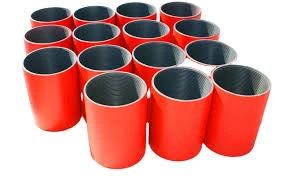- Afrikaans
- Albanian
- Amharic
- Arabic
- Armenian
- Azerbaijani
- Basque
- Belarusian
- Bengali
- Bosnian
- Bulgarian
- Catalan
- Cebuano
- Corsican
- Croatian
- Czech
- Danish
- Dutch
- English
- Esperanto
- Estonian
- Finnish
- French
- Frisian
- Galician
- Georgian
- German
- Greek
- Gujarati
- Haitian Creole
- hausa
- hawaiian
- Hebrew
- Hindi
- Miao
- Hungarian
- Icelandic
- igbo
- Indonesian
- irish
- Italian
- Japanese
- Javanese
- Kannada
- kazakh
- Khmer
- Rwandese
- Korean
- Kurdish
- Kyrgyz
- Lao
- Latin
- Latvian
- Lithuanian
- Luxembourgish
- Macedonian
- Malgashi
- Malay
- Malayalam
- Maltese
- Maori
- Marathi
- Mongolian
- Myanmar
- Nepali
- Norwegian
- Norwegian
- Occitan
- Pashto
- Persian
- Polish
- Portuguese
- Punjabi
- Romanian
- Russian
- Samoan
- Scottish Gaelic
- Serbian
- Sesotho
- Shona
- Sindhi
- Sinhala
- Slovak
- Slovenian
- Somali
- Spanish
- Sundanese
- Swahili
- Swedish
- Tagalog
- Tajik
- Tamil
- Tatar
- Telugu
- Thai
- Turkish
- Turkmen
- Ukrainian
- Urdu
- Uighur
- Uzbek
- Vietnamese
- Welsh
- Bantu
- Yiddish
- Yoruba
- Zulu
finished casing coupling
Understanding Finished Casing Couplings An Essential Component in Oil and Gas Drilling
Finished casing couplings play a pivotal role in the oil and gas drilling industry, serving as critical components in the assembly of casing strings that protect wellbore integrity. These couplings are designed to connect and seal lengths of casing pipe, facilitating the overall strength and functionality of the drilling operation. Their use is indispensable for ensuring the safety and efficiency of drilling processes in various geological formations.
What are Casing Couplings?
Casing couplings are short lengths of pipe that connect multiple sections of casing together. Casing itself is a series of pipes that line the borehole of a drilled well, providing support and preventing collapse while also protecting freshwater aquifers from contamination. The coupling acts as a joint, allowing for the easy assembly of casing while ensuring a tight seal to withstand downhole pressures and conditions.
Material Composition and Design
Finished casing couplings are typically made from high-strength materials such as carbon steel or alloy steel, chosen for their durability and resistance to corrosion. The design of these couplings can vary based on the specific requirements of the drilling project. Factors like well depth, the type of fluid being extracted, and environmental conditions influence the selection of coupling designs. Common designs include threaded and welded couplings, each tailored to meet the specific demands of different drilling environments.
Manufacturing Process
finished casing coupling

The manufacturing of finished casing couplings involves several stages, including the selection of raw materials, forging, machining, and heat treatment. The quality of these couplings is paramount, as any failure can lead to severe consequences, including loss of drilling equipment, environmental contamination, and increased operational costs. Hence, stringent quality control measures are in place throughout the manufacturing process, ensuring that each coupling meets industry standards for strength and reliability.
Installation and Use
During the drilling process, finished casing couplings are installed as sections of casing are lowered into the wellbore. Proper installation is critical, as improper seals can lead to leaks and casing failure. Drillers must adhere to best practices and use specialized tools to ensure that couplings are securely tightened. This not only aids in maintaining the structural integrity of the well but also enhances safety for all personnel involved in the drilling operation.
Challenges and Innovations
While finished casing couplings are reliable, they are not without their challenges. Issues such as corrosion, wear and tear, and improper installation can compromise their functionality. However, advancements in material science and engineering are leading to the development of innovative coupling designs that offer enhanced resistance to corrosion and fatigue. Additionally, real-time monitoring technologies are gradually being integrated into drilling operations, allowing for continuous assessment of casing integrity and early detection of potential failures.
Conclusion
In conclusion, finished casing couplings are indispensable components in the oil and gas drilling industry, ensuring the integrity and safety of drilling operations. Their role in connecting casing strings cannot be overstated, as they directly influence the overall effectiveness of well construction and maintenance. As technology advances, the industry continues to innovate, improving coupling designs and materials to meet the ever-evolving challenges of drilling in complex environments. Understanding the significance of these components is essential for any professional in the field, as they contribute to the success and sustainability of oil and gas extraction efforts.
-
Tubing Pup Joints: Essential Components for Oil and Gas OperationsNewsJul.10,2025
-
Pup Joints: Essential Components for Reliable Drilling OperationsNewsJul.10,2025
-
Pipe Couplings: Connecting Your World EfficientlyNewsJul.10,2025
-
Mastering Oilfield Operations with Quality Tubing and CasingNewsJul.10,2025
-
High-Quality Casing Couplings for Every NeedNewsJul.10,2025
-
Boost Your Drilling Efficiency with Premium Crossover Tools & Seating NipplesNewsJul.10,2025







